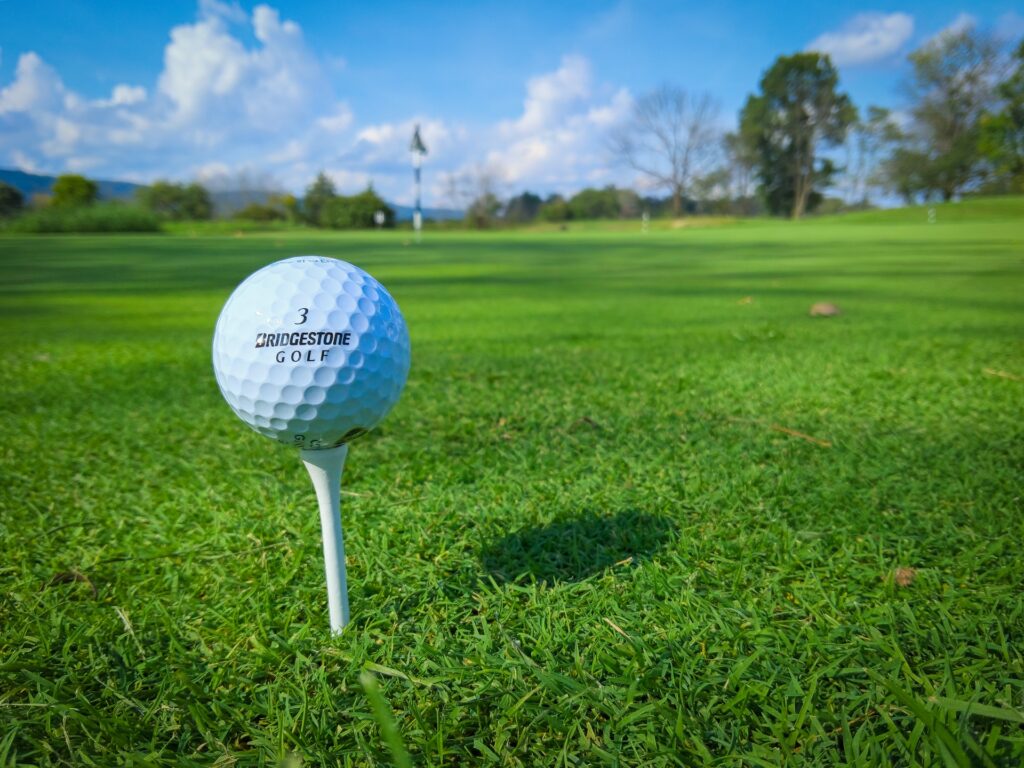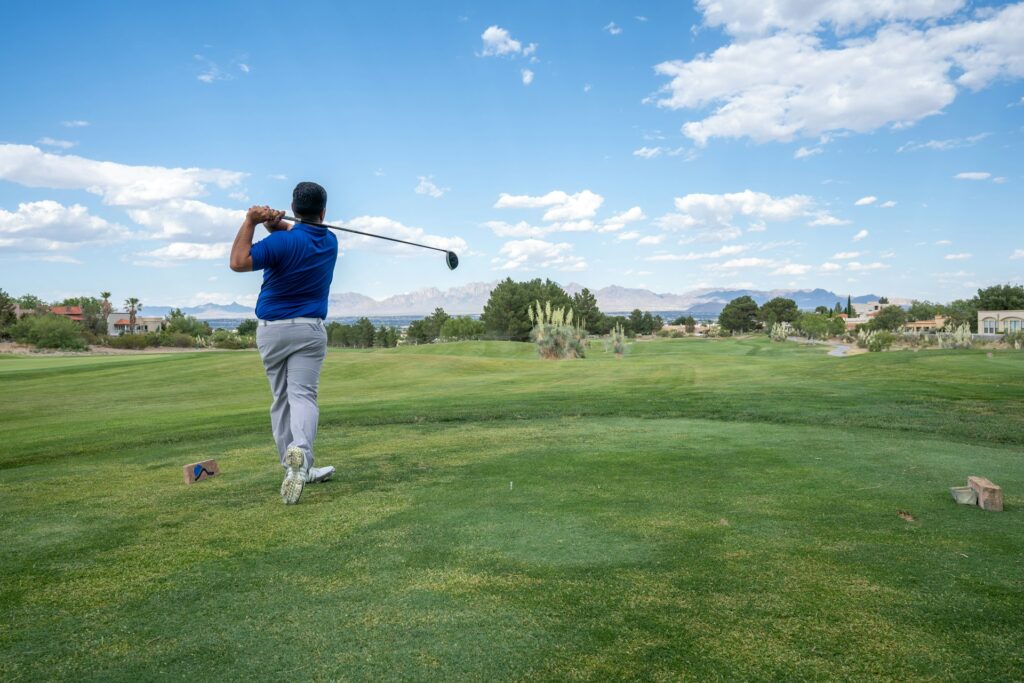
While a straight ball flight is the ideal that many amateur golfers strive for, having the ability to intentionally curve the ball is a critical skill for taking your game to the next level. Among the different trajectories in a player’s arsenal, few are as valuable as mastering the cut shot. This right-to-left ball flight (for a right-handed golfer) provides a host of strategic advantages by allowing you to work the ball away from trouble, hold firm in the wind, access tighter pin positions, and maximize distance on certain holes.
What Exactly Is a Cut Shot in Golf?
A cut shot in golf is a type of intentional shot shape where the ball curves from left-to-right for a right-handed golfer (and right-to-left for a left-handed golfer). It’s one of the two main ball trajectories players can employ, with the other being a draw or hook shot that shapes in the opposite direction.
Unlike a straight ball flight, a cut shot has a distinct curved shape to it due to the spin imparted on the ball at impact. The curvature results from a clockwise spin for a right-hander that causes the ball to drift from left-to-right as it loses height. The amount of curve can vary from a subtle bend to a more pronounced banana-like shape depending on factors like clubhead path, face angle, swing speed and spin rates.
While often thought of as a lower, more penetrating trajectory, cuts can actually have varying amounts of height. A low, boring cut shot will have very little vertical launch but more roll, while a higher cut may have more carry and less run on landing. Regardless of height, the defining characteristic is the right-to-left curvature for a right-handed player.
The cut shot is an extremely valuable weapon to have as it allows golfers to work the ball around trouble and set up easier approach angles into greens. It also proves useful in windy conditions to mitigate against being pushed off line. Learning to cut the ball gives players another dimension of shot-making ability.

Why Would You Want to Hit a Cut Shot?
There are several compelling reasons why golfers at all skill levels should learn to execute a cut shot effectively:
Strategic Advantages
One of the primary benefits of having a cut shot in your arsenal is the strategic options it provides. With the ability to shape shots from left-to-right, you can easily avoid hazards and obstacles on the course that lie to the right side. This opens up angles and approach options that may be unavailable if you could only hit a straight or draw shot.
Better Accuracy in Wind
Cutting across the wind from left-to-right is generally easier and more controllable for a right-handed player compared to trying to hold a draw against the wind. The cut spin helps knit the ball’s trajectory firmer against any crosswinds, allowing you to be more accurate with your approach shots on blustery days.
Longer Distance Potential
For many golfers, a cut shot will produce greater distance than a straight shot thanks to the lower, penetrating ball flight. With less spin, cut shots typically roll farther after landing as well. The extra yardage gained can be significant, especially with driver and long clubs.
Holding Tight Pins
When the pin is cut tight over a bunker or water to the right, playing an intentional cut shot that starts left of the target and curves back is the safest play. This shape holds the green well while avoiding those trouble spots short-sided.
Regardless of a golfer’s typical miss, having the ability to turn the ball right-to-left at will is an indispensable skill that provides exponentially more options on every hole. The accuracy, distance, and strategic advantages make it a shot well worth investing practice time to master.
How Do You Execute a Perfect Cut Shot?
Setup and Alignment
Proper setup and alignment are crucial for consistently hitting cut shots. Start by aiming your body and feet slightly left of the target line. For example, if you want to hit at the flag, align your feet 5-10 yards left of that. This promotes an out-to-in swing path needed for cutting the ball. You’ll also want the ball position slightly back in your stance.
Grip and Hand Position
For a right-hander, rotate your grip slightly clockwise on the club by turning both hands to the right. This closed grip position promotes an in-to-out clubhead path through impact and imparts clockwise spin on the ball for a cut. Just be careful not to overly strengthen your grip.
Swing Path
The key swing thought for hitting a cut is to feel like you are swinging slightly out-to-in from the target line. Envision brushing the grass out towards the target on your downswing. This out-to-in path imparts clockwise spin and a fade spin axis to create the right-to-left curvature. Resist any tendency to pull the club across the line too much.
Stable Face Angle
While your swing path is out-to-in, you don’t want your clubface open or closed at impact. An open face will cause a slice, while too closed could produce a dead straight push. Focus on a square or slightly closed clubface in relation to your swing path through the hitting area.
Weight Transfer
Make a smooth transfer of weight from your back leg to front side through impact. This helps square the face and solidly compress the ball for an ideal cut trajectory. An excessive weight hang back leads to open face issues.
With practice, you can gradually increase the curvature by increasing your out-to-in swing path and hand rotation through the hitting zone. But start moderately and let the clubface, path and solid compression do most of the work for a controlled, reliable cut shot.

What Are the Common Mistakes to Avoid When Cutting the Ball?
Overly Closed Clubface
One of the most frequent errors for players learning the cut shot is having too closed of a clubface at impact. While you want a slightly closed face in relation to your swing path, an overly shut face will cause the shot to start too far left and cut across the line too severely. This often results in a push or extreme hook rather than the intended fade shape. Focus on a relatively square or minimally closed face position through the hitting zone.
Swinging Across the Line
Another typical mistake is swinging the club too much from outside-to-in across the target line, rather than slightly out-to-in from the target. An overly inside-out path imparts too much clockwise spin, again leading to an exaggerated hook spin instead of the intended fade shape. Concentrate on making a subtle body turn through the ball with your swing path working out-to-in along your foot line.
Holding On Through Impact
A cut shot requires clean compression and an unhinging of the wrists through the hitting area. A common fault is holding off the release of the club and leaving the face open and arms too tight. This stalls the body rotation and reduces compression, often leaving the face hanging open and putting excessive side spin on the ball leading to a big slice. Stay smooth and allow for a full release.
Sliding Hips Laterally
Some golfers make the mistake of sliding their hips too far laterally towards the target through impact. This moves you ahead of the ball and limits your ability to square the face for a controlled cut shape. Focus on rotating your hips and turning through to the target rather than sliding them towards it.
Poor Weight Transfer
Lastly, many struggle with consistently transferring their weight properly from the back foot to front side in balance. Hanging back inhibits compression and typically leaves the face open through impact causing a slice spin. Concentrate on an athletic weight shift into your lead heel as you turn through.
By being aware of and eliminating these common swing faults, you’ll be well on your way to grooving a reliable, controlled cut shot. As with any new move, some practice is required to fully ingrain the proper mechanics.
How Can You Practice and Groove the Cut Shot?
Use Alignment Sticks
One of the best drills is to place an alignment stick on the ground pointing at your intended target line, then set a second stick 5-10 yards to the left, parallel to the first. Practice aiming your feet, body, and swing path along the line of the second stick to groove the out-to-in path needed for a cut. This creates an exaggerated visual to ingrain the swing direction.
Draw a Line on the Ball
Drawing a line on the outer side of the ball can provide helpful feedback on how much cut you are imparting. Ideally, you want the ball to start fairly straight then curve back to the target with the line pointing at the final resting spot for a proper fade shot shape.
Hit Cut Shots at 50-75% Swing
When first learning to hit cuts, focus on making 50-75% smooth swing efforts with your wedges and short irons. The lower speed makes it easier to groove the face control and swing path needed before trying to cut drivers at full speed.
Use a Visual Aimpoint to Start
Pick a specific aimpoint 5-10 yards to the left of your eventual target and swing along that line to initiate the cut spin. As you become more comfortable hitting fades, you can start picking targets a bit further left to induce more curvature.
Experiment With Ball Position
Players will find it easier to hit cuts with the ball position slightly back of center in their stance. This promotes an in-to-out downswing path. Moving it too far back in the stance can cause excessive curvature.
Once you develop some feel, gradually increase speed with your longer clubs and focus on making a full turn and release rather than guiding the club. Practice regularly hitting cut shots on the range as well as on the course itself when the opportunity allows.
The key things are starting with softer swings, using alignment aids, picking the right curved target line and ball position and making a committed out-to-in swing. Apply that consistently and you’ll be cutting it tight in no time!

When Is the Best Time to Play a Cut Shot During a Round?
Avoiding Trouble on the Right
One of the most common times to utilize a cut shot is when there is trouble down the right side of a hole that you want to avoid off the tee or on your approach. This could be fairway bunkers, water hazards, out-of-bounds stakes, or thick rough/trees.
By hitting a controlled fade, you can easily work the ball away from those right-side dangers while still keeping your target line in play. This shot shape allows you to be more aggressive at tucking drives down tighter fairways or attacking pins cut over hazards.
Playing Into a Left-to-Right Wind
Cutting across a prevailing left-to-right wind is generally easier than trying to hold a draw against it. The right-to-left ball flight and lower trajectory of a cut shot cuts through the wind better and holds its line more predictably. You’ll often see the best players opt for this shot shape when battling a crosswind from the left.
Holding a Tight Right Pin Position
When the pin is cut on the right portion of the green closely guarded by a bunker or water hazard, hitting a draw that starts at the pin and cuts away makes for a very risky shot if missed slight. A cut that starts safely out to the left and works its way back to the hole is the preferred play. This holds the proper shape into the scoring zone while avoiding those trouble spots on the short side.
Hitting It Stinger
On long par 4 or par 5 holes that require keeping the ball under the wind, many tour pros will hit a knuckle-ball stinger using an exaggerated cut swing. The low penetrating trajectory gets the maximum roll while the curve holds the shot online for breakthrough distance.
Essentially, a cut shot is a great option anytime you need to work the ball away from trouble on the right side. It’s also extremely effective when you have a crosswind affecting your ball flight. Learning to command this shot shape provides huge strategic benefits over the course of a round.
Enjoyed this guide of What is a Cut Shot in Golf? Then be sure to check out our other golf guides.
- Best Insoles for Golf Shoes
- Best Golf Cart Phone Holders
- Best Golf Tripods
- Best Knee Braces for Golf
- Best Golf Balls for Seniors
- Best Golf Cart Batteries
- Best Cooling Fans for Golf Cart
- Best Golf Cart Covers
- Best Golf Shoes for Plantar Fasciitis
- Best Coolers for Golf Cart
- Best Golf Balls for Beginners
- Best Golf Glove Holders